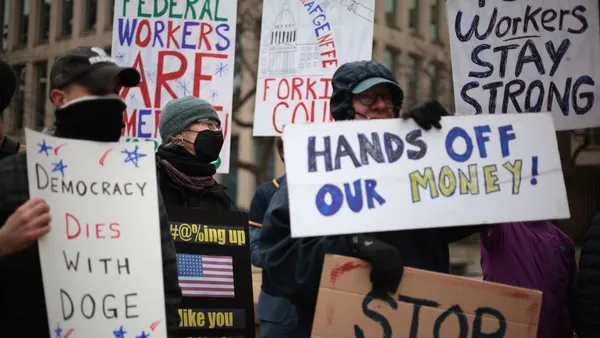Dive Brief:
- The Hawaii Supreme Court ruled 4-1 to uphold a state Board of Land and Natural Resources construction permit for the $1.4 billion Thirty Meter Telescope (TMT) International Observatory, project officials announced last week.
- The same court revoked the project's permit in 2015 on procedural grounds and returned it to the Hawaii Circuit Court where new hearings got underway in October of 2016. In March 2017, the board announced it was going to re-issue the permit, launching this latest legal battle in the state's highest court. Observatory officials said they will now start to fulfill the requirements of the permit before beginning construction.
- The court, according to an Associated Press report, addressed arguments from Native Hawaiians that the project should not move forward on Mauna Kea because the dormant volcano is a sacred site. The ruling said that astronomy and Native Hawaiian "uses on Mauna Kea have co-existed for many years and the TMT Project will not curtail or restrict Native Hawaiian uses." The court added that Native Hawaiians will benefit from information gathered by the telescope. Opponents reportedly have vowed to stop construction, according to Gizmodo, "at whatever cost."
Dive Insight:
Native Hawaiians opposed to the project, along with their supporters, could be planning protests similar to those that took place prior to the court's 2015 decision to rescind the permit. Opponents maintained a presence on Mauna Kea for more than a year and physically blocked crews from making their way to the construction site. At one point, proponents of the telescope project sent a letter to Hawaii Gov. David Ige asking that the state provide "safe passage" past protestors and enforce laws that prohibited opponents from occupying areas on or near the site.
An active protest site can create dangerous situations, particularly when protestors breach the site. This summer, as part of a campaign to try to stop construction of the Mountain Valley Pipeline in Virginia, one protestor managed to halt work for 14 hours after she climbed 20 feet to the top of a piece of construction equipment and locked herself to it. Not only could she have been seriously injured, but her hijacking of the equipment could have also endangered construction crews.
Eventually, the state police managed to free her and see her safely to the ground before charging her with trespassing.
No matter the situation or how heated the rhetoric, contractors and their employees should never engage physically with protestors. The best, and only, option is to contact the appropriate authorities and let them deal with it.













